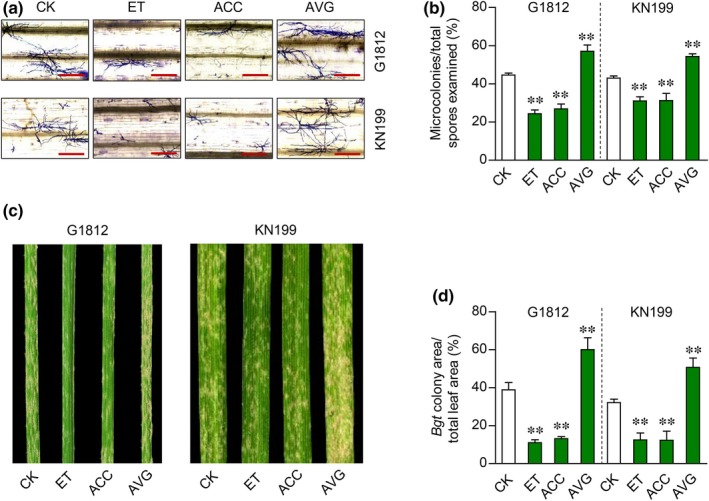Figure 3.

Effect of changing ethylene (ET) concentration on Blumeria graminis f.sp. tritici (Bgt) defense in the Triticum urartu accession G1812 and the common wheat cultivar Kenong 199 (KN199). Ethylene (10 ppm) was applied by placing plants in sealed containers. 1‐Aminocyclopropane‐1‐ carboxylic acid (ACC, 20 μM) and aminoethoxyvinylglycine (AVG, 10 μM) were applied by spraying. The plants were inoculated with Bgt at 24 h after the treatment. (a, b) Influence of Bgt microcolony development by ET, ACC or AVG as revealed by Coomassie blue staining of fungal structures (a) and quantitative comparison with the control (CK) (b). The samples were analyzed at 72 h post‐inoculation (hpi). (c, d) Differences in Bgt colony growth on the leaves treated by ET, ACC or AVG at 8 d post‐inoculation (dpi), as shown by the photographs of Bgt‐infected leaves (c) and quantitative comparison of the percentages of Bgt colony area (d). The data displayed were typical of four independent experiments. The means (± SE) in (b) each were calculated from eight seedlings; those in (d) each were obtained by scanning 12 Bgt‐infected leaves from four separate experiments. **, P < 0.01 (Student's t‐test). Bars, 200 μm.
